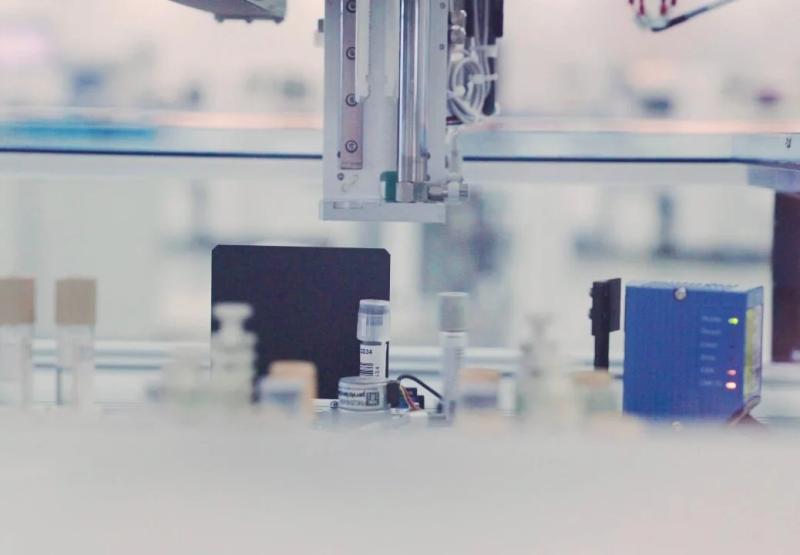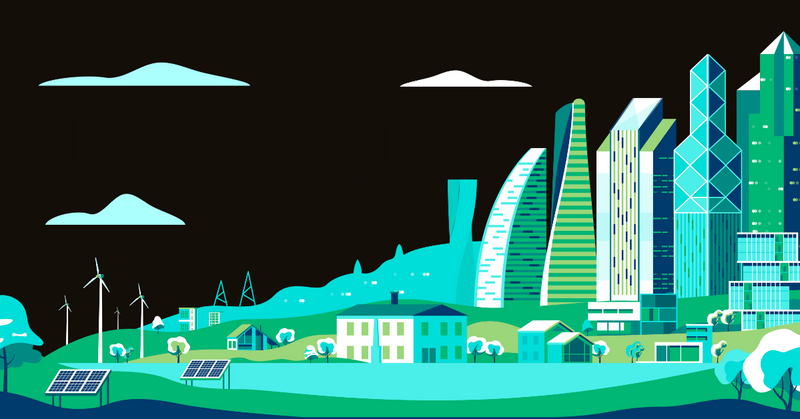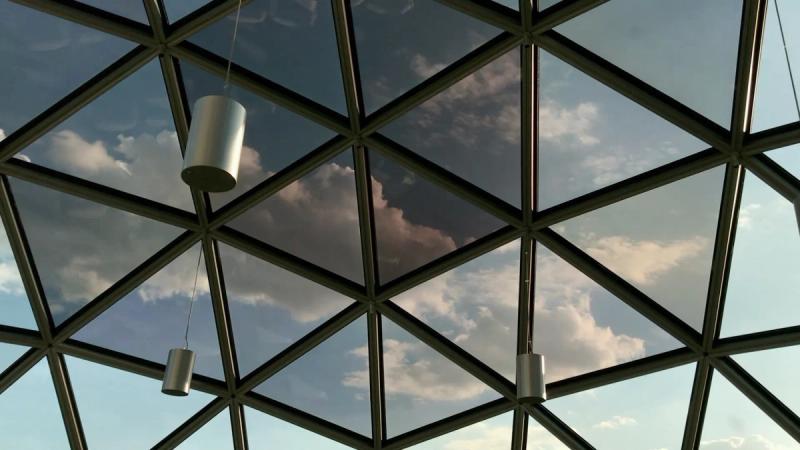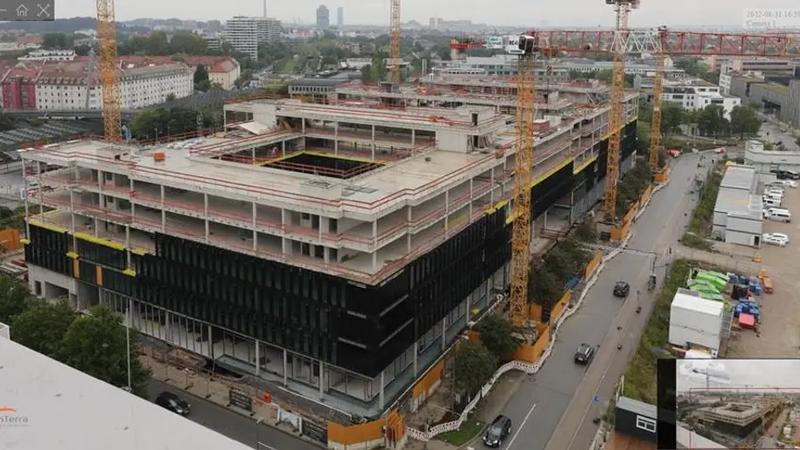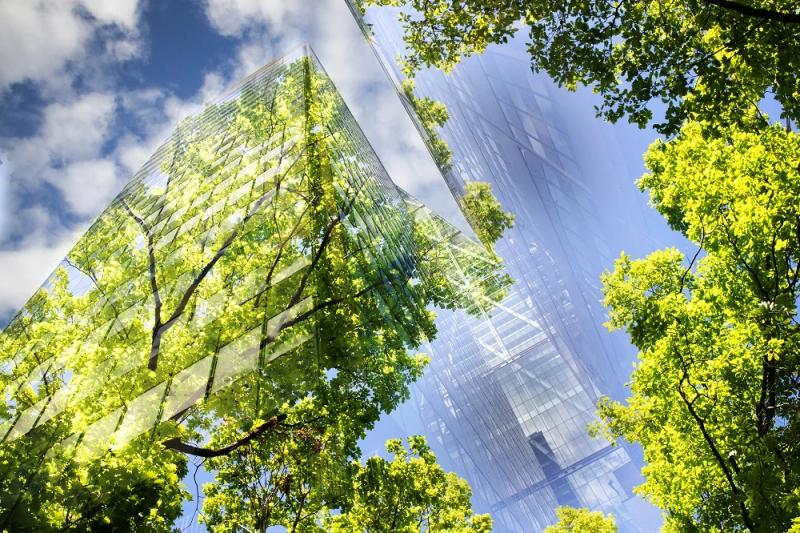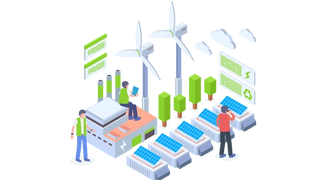
Greentech: How green tech will impact how we build in 2023
Greentech: How green tech will impact how we build in 2023
What exactly is greentech?
Greentech is a term used to describe any technologies that are environmentally friendly, reduce our carbon footprint, and have a cyclical lifecycle. These technologies can range from renewable energy sources, such as solar and wind power, to green transportation, like electric cars or bikes. For this article we will focus mainly on green building materials. These materials are typically made from renewable resources, those that can be quickly replenished or can be recycled or reused at the end of their lifecycles. Common types of green building materials include bamboo, reclaimed wood, recycled plastic or fly ash concrete. Besides those, there are also materials that contribute to a greener building by their functionality. For example, eyrise Smart Glass Windows. By using these types of green building materials, builders can help conserve energy while creating a healthier environment for occupants.
Greentech also encompasses efforts to reduce waste by utilizing more efficient products and services. By implementing greentech solutions, businesses and individuals can help fight climate change and allow building owners to qualify for green building certificates providing generous tax incentives. Greentech is an important part of our future, as it provides us with the opportunity to create a sustainable planet for generations to come.
Impact of greentech on how we build
Over the last few years, greentech has had a tremendous impact on new construction and refurbished buildings. LEED certification and green building certificates are now commonplace as more governments offer incentives for creating sustainable infrastructure. These incentives can help raise capital and reduce the environmental impact of construction projects. Because tax incentives are available for builders who use greentech to create more sustainable structures, it is more cost-effective for commercial real estate projects to include green technology in the long run. Greentech has also helped promote healthier environments in homes, offices and other buildings by introducing improved air filtration systems and ventilation solutions that reduce the number of toxins present in indoor spaces as well as bring in better conditions for people who occupy these buildings. There is no doubt that greentech has made a huge difference in how we build today.
Sustainable Building Practices
Sustainable building practices are a set of techniques and strategies aimed at reducing the environmental impact of construction and operation through the use of environmentally friendly materials, energy-efficient systems, and waste reduction. These principles encompass a variety of approaches such as using renewable resources for construction materials, energy conservation, water conservation, and land management. Sustainable building practices also consider the well-being of occupants by incorporating natural ventilation systems, daylight harvesting, green roofs, and other design strategies that promote health and wellbeing. Sustainable building practices have become increasingly important in recent years as we strive to reduce our carbon footprint and create healthier communities.
However, one important aspect of greentech that doesn't have a lot of awareness for well-being and sustainability is natural light.
The importance of natural light in a greentech solution
Natural light is one of the most important components of any green tech solution. This is because natural light has a number of health benefits, such as helping to regulate our circadian rhythms and providing vitamin D for our bodies. Furthermore, natural light can be used to help reduce energy consumption in buildings due to its ability to absorb solar radiation and heat up the interior. Eyrise liquid crystal windows, switchable windows, and smart glass are all examples of greentech solutions that make use of natural light. These products are designed to allow in natural light while also blocking out harmful UV rays and reducing glare from sunlight. Additionally, these products can also be used to control the amount of solar radiation entering a building which helps reduce the need for air conditioning. Ultimately, natural light plays an important role in any greentech solution by providing numerous health benefits while also helping reduce energy consumption.
Understanding the importance of green tech solutions for sustainability in building practices
Sustainability in building practices is becoming increasingly important, as it can help to reduce energy consumption, promote healthier living and work environments, and help protect the environment for future generations. Sustainable building practices include using materials that are environmentally friendly, such as those made from recycled content or renewable resources; using energy-efficient heating, cooling, and lighting systems; and incorporating water conservation methods into buildings. Additionally, sustainable building practices can help to reduce air pollution caused by construction activities and create more efficient use of land resources. When implemented correctly, these practices can have a positive impact on the environment while helping to reduce costs associated with energy usage. Understanding the importance of sustainability in building practices is essential for architects and builders alike in order to ensure that our built environment is sustainable for generations to come.
Examples of sustainable building practices and technologies
Eyrise smart glass windows like the eyrise s350 are one of the most popular examples of sustainable building practices and technologies that more building owners are turning to. By using this type of window, building owners can reduce their energy costs, as the windows can be dimmed or shaded to prevent overheating and reduce air conditioning usage. The windows can also be used to help with natural daylighting, allowing for less artificial lighting and further reducing energy costs. Smart glass windows also provide better insulation than regular windows, helping to keep the indoor temperature more consistent throughout the year. By investing in these types of sustainable building practices and technologies, building owners can save money while doing their part to protect the environment.
Advantages to using sustainable building practices and technologies
Sustainable building practices and technologies offer numerous advantages. Firstly, they can help reduce a building's operational carbon emission by utilizing renewable sources such as solar or wind power, or reducing the need for energy all together. Secondly, they use materials that are recycled or recyclable, helping to protect the environment. Thirdly, these materials may be more cost-effective than traditional building materials, when measured over the full lifecycle of the building. Fourthly, sustainable building practices and technologies can help improve light quality, temperature comfort and air quality inside the building. Finally, using these practices and technologies can help prolong the life of the structure by using durable materials that will not easily deteriorate over time. Eyrise smart windows do not need to be replaced after a few years nor brake down like traditional mechanical blinds. The use of smart windows will reduce the embedded carbon of the stucture. In conclusion, implementing sustainable building practices and technologies is an effective way to reduce environmental impact while also saving money in the long run.
The Future of Greentech in Building
The future of greentech in building is very promising. Greentech has the potential to revolutionize the way buildings are designed, built and managed to ensure that they are more energy-efficient, sustainable and cost-effective. Greentech can help reduce energy consumption by utilizing energy-saving features such as low-flow faucets, energy efficient lighting and solar panels. Additionally, green building materials such as recycled glass, bamboo and cork can be used to create walls, roofs and floors that are more durable and eco-friendly. With greentech becoming increasingly accessible and affordable for the average person, there is no doubt that it will have a positive impact on the environment in the years to come.
Benefits of incorporating greentech into future building projects
Incorporating greentech into future building projects can have tremendous benefits for the environment and society. As already stated, greentech can help reduce emissions, conserve energy and water, improve air quality, create green spaces, and reduce waste. In addition, greentech can be an affordable solution for creating sustainable buildings in urban areas. Additionally, incorporating greentech into future building projects could create new jobs in the construction industry. Adoption of greentech helps promote a culture of sustainability and responsibility by demonstrating the importance of preserving our environment for future generations. One of the most important aspects is how people relate to their environment, especially as people start coming back to the office full time, having a safe, healthy and interactive environment will be extremely important as a way to have people feel more at home and comfortable with their workspace. Greentech is essential for creating a better tomorrow and should be incorporated into all future building projects.
Challenges that may arise when utilizing greentech in building
There are ma few challenges that may arise when utilizing greentech in new or renovation of buildings. One key challenge is cost, as green technologies often require more upfront investments than traditional building methods. Additionally, some green technologies may not be available in certain areas, making them difficult to access and use. Another challenge is the lack of knowledge about how to properly implement green technologies into a building structure, as many builders may not be familiar with the intricacies of such technologies. Finally, it can be difficult to ensure that the green technology being used is actually effective in reducing energy consumption or waste production over its lifetime. To overcome these challenges and ensure successful implementation of greentech in building projects, it is important to conduct thorough research on the various options available and consult with experts when necessary. It can sometimes be confusing since the cost upfront may detur some building owners from implementing these solutions. However, over their lifetime, some of these technologies will pay for themselves. Eyrise windows, for instance, might have a higher cost upfront, but over the long run, installing smart glass as part of a global green tech solution are less expensive than other solutions like automatic blinds.
How greentech will change how we build
Greentech is a rapidly emerging field that has the potential to revolutionize how we construct and maintain buildings. Greentech utilizes new technologies such as smart materials, digital fabrication, and automation to reduce energy consumption, improve air quality, and create more sustainable spaces. Buildings constructed with greentech will be more energy-efficient, comfortable, and durable than those of the past. They will also be able to produce their own power using renewable resources such as solar or wind energy. Additionally, greentech can help reduce construction waste and water usage while utilizing recycled materials whenever possible. Ultimately, greentech has the potential to dramatically change how we build structures in order to create a healthier and more sustainable future. And one of the best ways to understand how greentech can benefit any company is to contact a representative from eyrise who will be able to partner with you to find the best solution.

